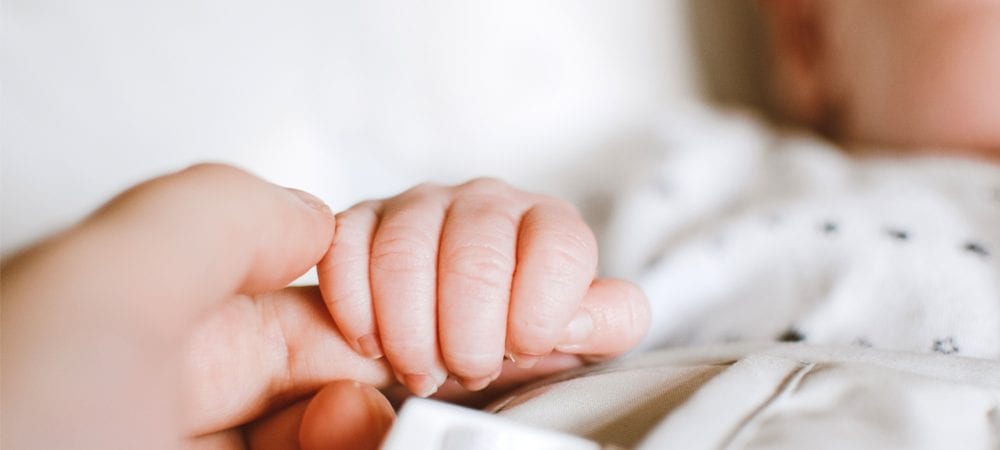
Why Some Parents Choose Plagiocephaly Treatment With a Helmet and Others Don’t
Deciding whether to give your baby plagiocephaly treatment with or without a helmet is by no means an easy task. Conflicting attitudes and opinions from GPs, HVs, the press, private clinics and other parents can often serve to heighten the anxiety – no matter how honourable the intentions behind their advice might be.
It’s like an emotional seesaw. Do you follow the view promoted by the NHS that it will self correct and choose not to treat your baby in the knowledge that the deformity may not fully correct? Or do you choose to see if a clinic that provides helmet treatment will give greater improvement than would happen without intervention?
To find out how parents are addressing this dilemma, we decided to explore some of the different reasons that are being given for and against choosing plagiocephaly treatment with a helmet. A considerable amount of time spent talking to parents and combing through social media pages, forums and comment threads has revealed to us just how wide these reasons can be.
Many parents feel that they have harmed their baby and the feelings of guilt surrounding this influence many of their feelings and they don’t want to make this worse by putting a helmet on their baby. Every baby is loved, special and perfect and friends, family and grandparents often reflect and reinforce a parent’s own view without necessarily being objective. This is all understandable when parents have followed good advice on back sleeping which has saved the lives of thousands of infants. They have not harmed their baby and if the baby is young enough and there is a flattening, this can can easily be corrected in a similar way that teeth braces are used to straighten teeth. Evidence proves that early intervention gives a lifelong, permanent correction.
We have shared some of the parent’s thoughts here in the hope that they will help guide you in your decision. If nothing else, they should at least serve as a reminder that you’re not alone.
Plagiocephaly treatment with a helmet
Many parents choose a helmet after repositioning for a month or two without success. For moderate and severe cases of plagiocephaly, there is a limit to how much can be achieved through repositioning alone and many head shapes are so severe that they will never catch up naturally.
We found that parents said that there were also some conditions which prevented parents from being able to effectively use repositioning. One little boy had a rare genetic condition that meant he had to spend a lot of time in intensive care, so repositioning was not an option for him. Others have reflux or an untreated torticollis (tightening of one neck muscle) which made repositioning unworkable. More concerning is that there were many cases where parents were not advised to reposition at all.
Here are some of the main reasons parents gave for choosing to treat plagiocephaly with a helmet:
- Parents were concerned about the questions their children might have in the future if they were to choose not to go ahead with treatment. One source said of her daughter: “I don’t want her to grow up and wonder why we didn’t do anything about it when the option to help her was there.”
- Several were concerned that their children might not be able to wear certain types of headwear later in life. One six year old girl who had previously undergone treatment now has a passion for horses and her mother remarked that she would not have been able to wear a riding helmet had her head still been misshapen. The same could be said for many other activities and occupations, such as climbing, cycling and working in construction.
- Parents were concerned about the increased possibility of bullying later in life, and the effect that a head shape deformity might have on their children’s emotional and psychosocial wellbeing. One reported that hearing comments from people in the street triggered her decision to seek plagiocephaly treatment.
- Some parents chose to treat plagiocephaly with a helmet because they thought that the condition might affect their child’s neural development. However, research shows that while the exact nature of this relationship may be unknown, there does appear to be a link between plagiocephaly and motor delay, especially where torticollis is involved, but treatment will not necessarily improve any underlying problem.
A number of parents had family members with experience of plagiocephaly, which influenced their decisions when it came to their own children. One Mum had a cousin with a nine-year-old son, whose deformity remained very noticeable in spite of the doctor’s earlier advice, so she decided to treat her own son. Another parent decided to go ahead with treatment after seeing the difference it had made to the child of another family member.

Treating plagiocephaly without a helmet
Everyone has some degree of asymmetry, it’s what makes us human with over 95% of us have a normal almost symmetric head shape which is in proportion in width and front to back length. There is a group of about 3% of infants whose head shape is really quite severely deformed and these are the ones who need treatment. For the milder ones, plagiocephaly can be corrected sufficiently without the need for a helmet, through repositioning and ensuring that the baby stays off the flattened area in early infancy. In these children, the head can usually be returned to within the ‘normal’ range before the bones in the skull begin to harden and the infant starts to move around more independently.
There are also cases in which parents choose not to seek helmet therapy even when the deformity is moderate or severe. This can be for any number of reasons:
- Some are not aware that this option exists at all, or don’t find out about it until it’s too late. The time lag for referrals to paediatric specialists has left many parents unaware of the severity of their child’s deformities and the options that are available in early infancy and this critical early stage in their development has passed.
- Many are hesitant about treating a condition that is generally considered to be cosmetic rather than medical, and have been put off by their health care providers, being left with a feeling that they are being vain and putting their child through an unnecessary treatment.
- Many parents are led to believe that the head shape will correct itself. On the contrary, a study concluded that “only mild cases can be adequately treated by conservative, i.e. non-helmet, management.”
- The cost of plagiocephaly helmets can be an issue for many parents, as is the lack of funding available. Funding is not provided by the NHS for understandable reasons and all private healthcare insurers follow their lead. There are a charities that regularly provide assistance with fundraising, including Tree of Hope and Headstart4Babies. Treatment costs remain stable and are often cheaper than many dental and orthodontic treatments.
- Some parents get put off by what can be seen as pushy selling tactics used by some clinics and the fear of getting ripped off. After all, they’re private clinics, but privately offered treatments are offered by many good and competent clinicians, giving relief and help to many people.
- Others worry about the possible discomfort that is sometimes attributed to wearing a plagiocephaly helmet. With modern helmet treatments, this is very rarely a problem and only tends to occur if treatment protocols are not observed correctly.
- Following the recent controversy surrounding plagiocephaly helmets in the press, several parents simply believe that the correction that they give is no better than that which can be achieved through repositioning. The vast majority of the plagiocephaly research carried out previously and since has refuted this. Provided treatment is started in the first 14 months and the correct procedures are followed, a visible, permanent correction can invariably be achieved.
We hope this post has clarified some of the points you may wish to consider when deciding whether or not to choose helmet therapy for your child. If you’re still uncertain, there’s a substantial amount of literature online that may help guide you in your decision, including research papers, parenting websites, blogs and much more.
If you would prefer to speak to a specialist, Technology in Motion can help. We offer free pre-assessments to evaluate the severity of your baby’s head shape deformity, and unlike many other clinics, we won’t recommend treatment unless it’s actually needed. Even if treatment is recommended, we won’t pressure you into anything as we firmly believe that the final decision should be left to your well-founded intuition as a parent.
To arrange an appointment at your nearest clinic, or for more information on plagiocephaly treatment with a TiMbandAir helmet, call us today on 0330 100 1800.


